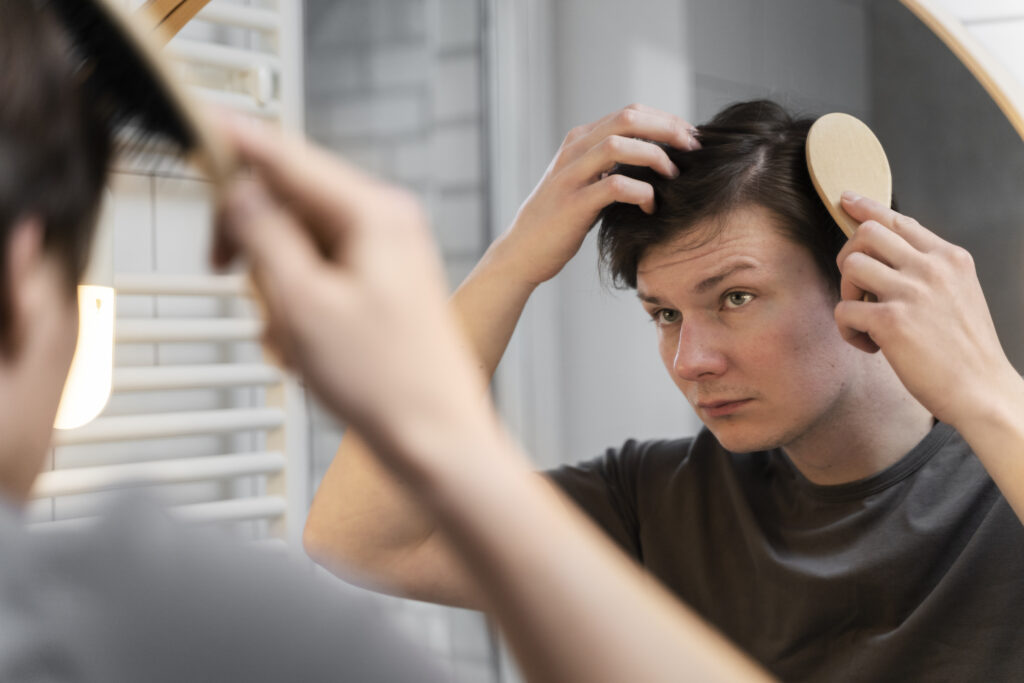
Dandruff can be an annoying and embarrassing condition, but understanding the types of dandruff can significantly improve your chances of finding an effective treatment. The scalp is a unique ecosystem, and various factors can contribute to dandruff, including skin type, lifestyle, and even dietary choices. In this blog post, we’ll explore the different types of dandruff, their causes, and how to treat them effectively.
1. Dry Scalp Dandruff
Characteristics:
Dry scalp dandruff often appears as small, white flakes that can be easily brushed off. It is typically accompanied by itching and can be exacerbated by cold weather or dry indoor environments.
Causes:
This type of dandruff is usually due to a lack of moisture in the scalp. Factors such as cold weather, low humidity, and excessive washing can strip the scalp of natural oils.
Treatment:
- Moisturizing Shampoos: Look for shampoos that contain moisturizing agents like aloe vera or glycerin.
- Scalp Oils: Apply natural oils like coconut or olive oil to hydrate the scalp.
- Limit Washing: Reduce the frequency of hair washing to retain natural oils.
2. Oily Scalp Dandruff
Characteristics:
Oily dandruff is characterized by larger, yellowish flakes that can cling to the scalp and hair. It may cause an oily shine to the hair, and the scalp can feel greasy.
Causes:
This type occurs when the scalp produces excess sebum, leading to oily skin. Hormonal fluctuations, stress, and an unhealthy diet can contribute to this condition.
Treatment:
- Anti-Dandruff Shampoos: Use shampoos containing zinc pyrithione, ketoconazole, or selenium sulfide to combat oiliness.
- Regular Washing: Increase the frequency of washing your hair to remove excess oil and flakes.
- Balanced Diet: Incorporate a balanced diet rich in omega-3 fatty acids and antioxidants to regulate oil production.
3. Seborrheic Dermatitis
Characteristics:
Seborrheic dermatitis is a more severe form of dandruff that manifests as red, inflamed patches on the scalp, often accompanied by oily flakes. It may extend beyond the scalp to other areas, such as the face or behind the ears.
Causes:
This condition is linked to a yeast called Malassezia, which thrives on oily skin. Factors such as stress, weather changes, and certain medical conditions can exacerbate it.
Treatment:
- Medicated Shampoos: Choose shampoos with coal tar, salicylic acid, or antifungal ingredients to reduce inflammation and flaking.
- Topical Corticosteroids: For severe cases, a doctor may recommend topical corticosteroids to reduce inflammation.
- Consistent Care: Regularly follow your treatment regimen to manage symptoms effectively.
4. Contact Dermatitis
Characteristics:
This type of dandruff is often mistaken for typical dandruff but is caused by an allergic reaction or irritation from hair products. It may present with red, itchy patches and flaking.
Causes:
Common irritants include hair dyes, shampoos, and styling products. Sensitivity to specific ingredients can trigger this reaction.
Treatment:
- Patch Testing: Identify potential allergens by performing a patch test with new products.
- Gentle Products: Use hypoallergenic and fragrance-free shampoos and conditioners to minimize irritation.
- Consultation: If symptoms persist, consult a dermatologist for personalized treatment options.
Conclusion
Identifying the type of dandruff affecting your scalp is crucial for effective treatment. By understanding the characteristics and causes of each type, you can choose the right products and methods to alleviate symptoms. If you’re unsure about your dandruff type or if over-the-counter treatments aren’t working, consider seeking professional advice to tailor a treatment plan to your needs.
Regular scalp care, a healthy lifestyle, and the right products can help you regain control over your scalp health, leaving you with a comfortable and flake-free head of hair.

